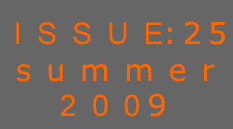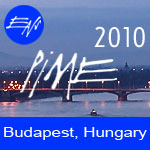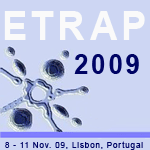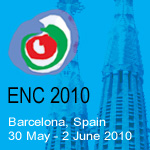
High-level Committee publishes report on pollution at France’s nuclear sites
The following text is a translation/adaptation that I have made of an interesting advisory report by France’s High-level Committee for Transparency and Information on Nuclear Safety (HCTISN) that was published in the November-December of the trade journal Revue Générale Nucléaire. The text was kindly forwarded to me by our friends at SFEN. Although the report was published last autumn it received little press coverage and the findings of the HCTISN make interesting reading. More information is available on SFEN’s website at: www.sfen.org.
No significant pollution measured at France’s nuclear sites
A report by the High-level Committee for Transparency and Information on Nuclear Safety (HCTISN).
Levels of pollution measured around France’s nuclear sites – both civil and military – are very low. They “do not require that any special measures be taken as far as the local environment and the general public are concerned.” This is one of the main conclusions drawn by France’s High-level Committee for Transparency and Information on Nuclear Safety (HCTISN) in an advisory report delivered to Jean Louis Borloo, France’s Minister of State for Ecology and Sustainable Development, on 7 November 2009. The report was intended to provide a definitive response to what became referred to as the “Tricastin events.” The event, which occurred in the summer of 2008, related to an accidental leak of liquid effluents containing about 74kg of natural uranium on the site run by SOCATRI. The majority of the effluents were transported via local water sources adjacent to the site down to the river Rhône. The incident, which was classified as Level 1 on the INES scale, solicited considerable media attention, with some newspapers writing rather alarmist articles claiming that very serious pollution of the environment had taken place – not only of the surface water, but also of the groundwater - in the immediate vicinity of the site.
In order to respond to the anxiety expressed by local inhabitants and, more generally, to guarantee the communication of transparent information on the radio-ecological status of nuclear sites in general and on the management of old radioactive waste disposal sites, Minister of State Borloo, who is responsible for environmental incidents, decided to ask the HCTISN to investigate the incident. In addition to asking the HCTSIN to give its recommendations with regards to the incident that occurred on 7 July 2008, and what happened afterwards, Minister Borloo asked the High-Level Committee to advise the government on “the radio-ecological follow-up at all France’s nuclear sites” and on “how old disposal sites for radioactive waste are managed.” He wanted the investigations to look in particular at “the quality of information that is made available to the general public, how transparent the public information process is and what needs to be done to get all the various stakeholders involved in the process.”
To put together its recommendations the HCTISN first organised hearings to listen to what the main stakeholders has to say, i.e. the safety and inspection authorities, technical experts and the main operators from the nuclear sector. In parallel to these hearings the High-Level Committee studied the very detailed reports that Henri Revol, its President, had asked the stakeholders to submit. This job of studying them and formulating recommendations was carried out by a Working Group presided over by Monique Sené, from the association of local information committees (CLI).
Responding directly to public anxiety about possible pollution of groundwater around nuclear sites the HCTISN, basing its findings on the summaries written by the inspection authorities, established very clearly that “the radio-ecological status of the groundwater underneath and around nuclear sites does not pose any significant environmental or healthcare problem.” This conclusion, which was drawn up by the highest authority responsible for ensuring transparency of information with regards to nuclear safety, is an important contribution to the energy debate in France. It does not reveal any significant new data on the subject because environmental protection specialists – whether they are working in the nuclear sector or not – know full well that that overall the level of radioactive pollution measured at civil and military sites is very low. However, it is the first time that a judgement of “non pollution” has been delivered with such “solemnity,” with an official recommendation sent to the government by an independent body mandated to give its advice on the situation. It is worth mentioning in passing that the opinion of the HCTISN was reached after a consensus had been reached, without a vote having been necessary. Thus is all the more remarkable bearing in mind the fact that the HCTISN includes a significant number of members well-known for their anti-nuclear views.
So, a few months after a wave of media coverage on the potential contamination of the groundwater, recommendations were put forward that dismissed the rumours and were intended to reassure local inhabitants. It goes without saying that the recommendations did not receive any media attention because the media only report on “good news” with the utmost reluctance. This is yet another illustration of how for many media outlets it is only worrying news, and not reassuring news, that makes good copy.
The recommendation of the HCTISN is backed up by radio-ecological measurements that were made at a number of nuclear sites. As the High-Level Committee states: “these measurements are mostly linked either to older nuclear activities, which began at a time when environmental considerations were less important and standards less stringent, or to isolated operational incidents. In a few cases, it cannot be discounted the that further radioactive substances might have continuously been added to pre-existing cases of pollution.”
The report goes on to say: “The status of groundwater and surface water around nuclear sites is generally well-known. Pollution and contamination levels have been the subject of longstanding and rigorous inspection and, if necessary, to further investigation and action aimed at limiting their spread or reducing their impact. This is the case at the following sites (as mentioned in reports submitted by the ASN, ASND and IRSN – various national nuclear inspection and control authorities): La Hague (ANDRA-AREVA), MARCOULE (CEA), SACLAY (CEA), TRICASTIN (AREVA), VEUREY-VOROIZE (SICN), VALDUC (CEA), BRUYERES-LE-CHATEL (CEA).”
In addition to this appreciation of the radio-ecological status at nuclear sites, and of the relevant information that was communicated about it, the HCTISN, in accordance with the judicial authority vested in it, is required to deliver a recommendation on the quality and transparency of the pertinent information communicated to the public. Within this context the HCTISN considers, with respect to the radio-ecological status of both nuclear sites and radioactive waste storage facilities, that the information delivered is “abundant and varied.” However, in many case this information is “difficult to access, sparse, disordered and compartmentalized.”
To improve this situation the HTCISN formulated 18 recommendations, which the Ministry agreed to take responsibility for. These recommendations focus essentially on three areas:
-
Making the information more comprehensible and accessible to the public:
-
by developing an internet portal that allows easy access to the information
-
by developing a scale of communications that is adapted to include information on cases of radio-ecological environmental pollution
-
Increasing the role of the local information committees (CLI).
Thanks to their pluralistic make-up these committees should play a leading role at local level by encouraging the spread of information and favouring consultation with stakeholders (these committees should be created at storage facilities where naturally radioactive waste is stored and where there are important environmental and societal issues at stake).
-
Developing a diverse and independent body of expertise.
A varied and independent source of expertise from among those whose expertise is usually called upon in cases involving the nuclear industry. This recommendation could be very quickly put into action.
For a more detailed look at the report, the individuals involved in the work of the HCTISN and the 18 recommendations of the HCTISN (it would have been too exhaustive to include them all in this translation) consult the SFEN website mentioned above (bottom of the home page) or read a copy of the Revue Générale Nucléaire of November-December 2008.
Mark O’Donovan
|





